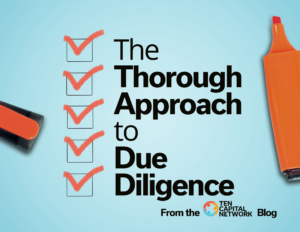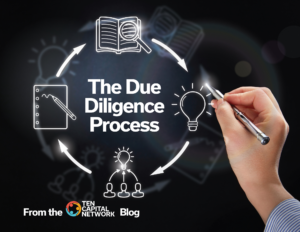
The Thorough Approach to Due Diligence
3 min read The Thorough Approach to Due Diligence. A startup investment goes through a series of stages. The first stage is the pitch presentation,

3 min read The Thorough Approach to Due Diligence. A startup investment goes through a series of stages. The first stage is the pitch presentation,

2 min read. The Due Diligence Process When embarking on a new investment, it’s essential to have a Due Diligence process in place to check

2 min read. The Due Diligence Process When embarking on a new investment, it’s essential to have a Due Diligence process in place to check

2min read Due Diligence Box: What is it and How to Prepare One After an investor expresses interest in funding your deal, the first question to